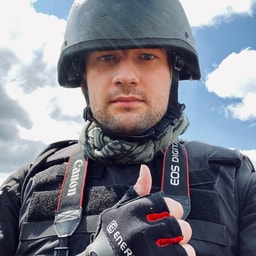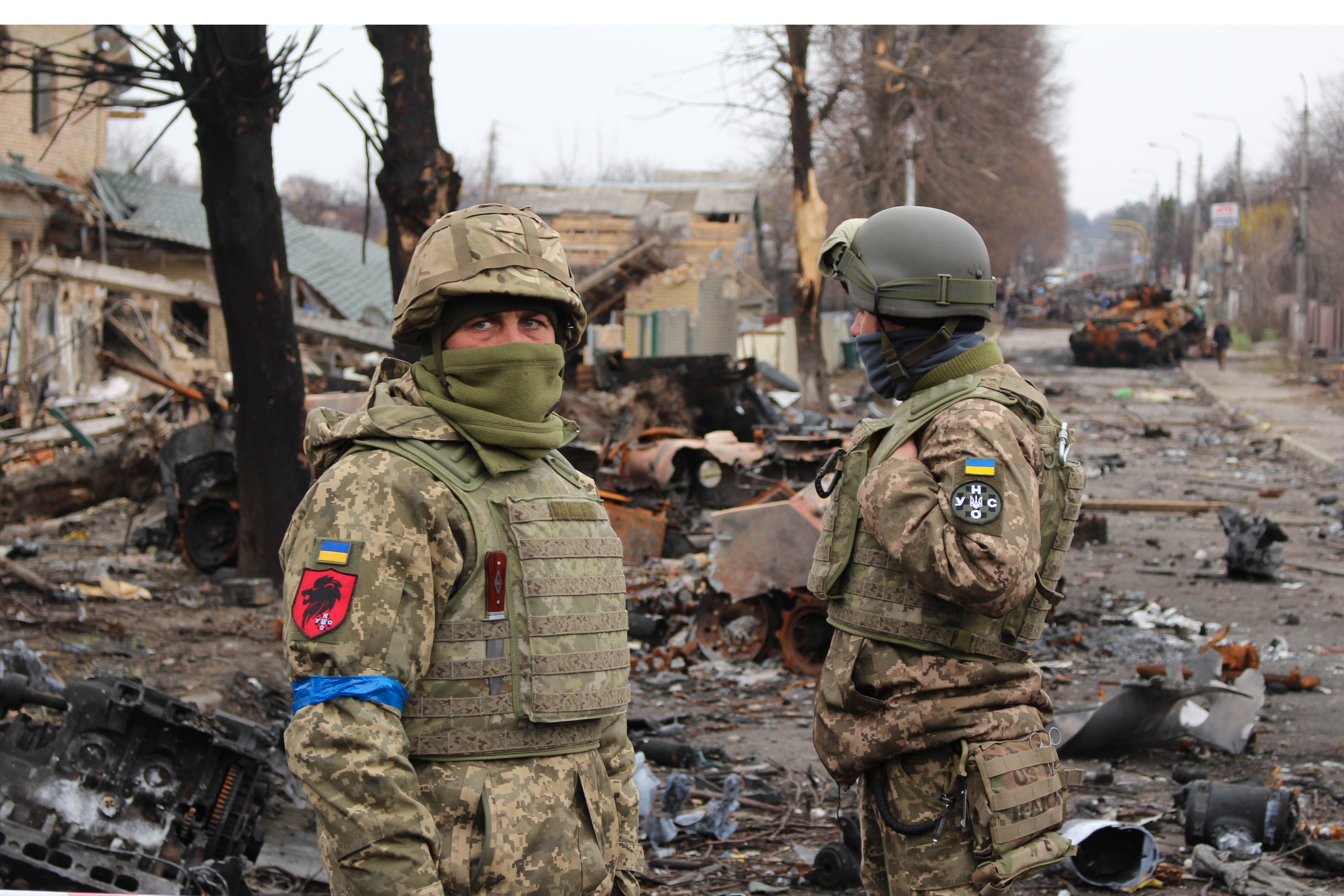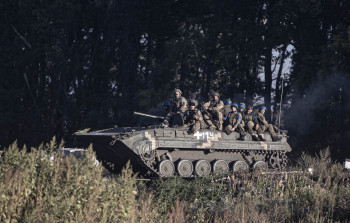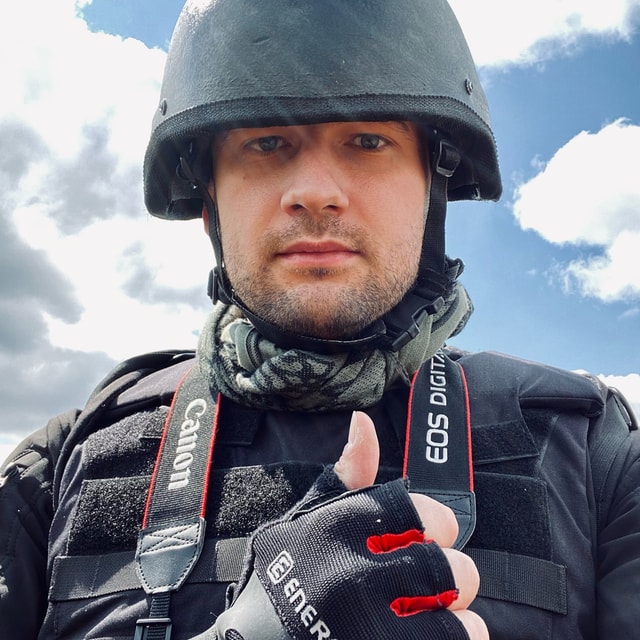Ukraine enters 2023 with frail upper hand over Russia
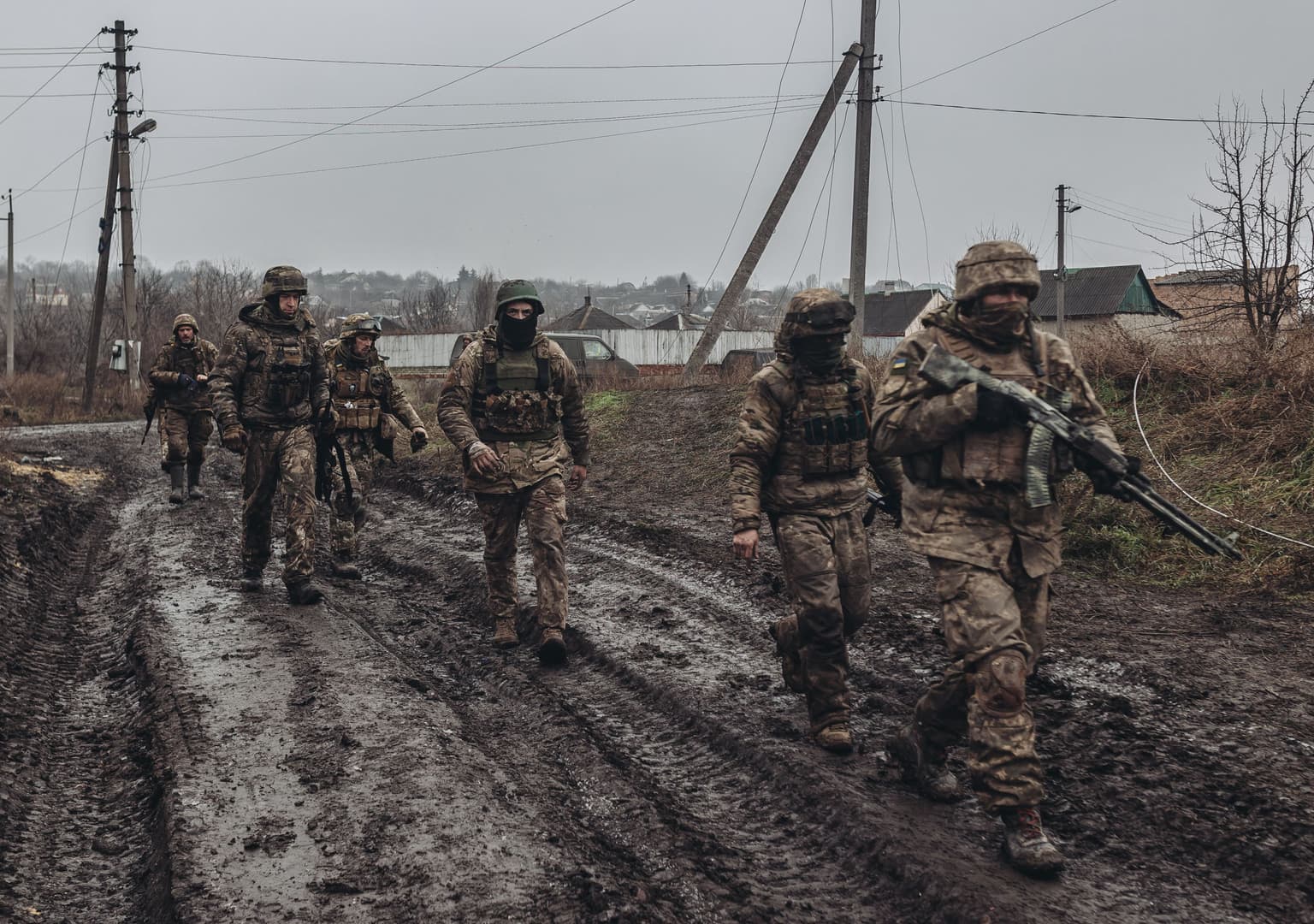
In December 2021, most forecasts voiced in the media did not give Ukraine much of a chance in case of Russia’s full-scale invasion.
Ten months after it started on Feb. 24, 2022, experts and media discuss where Ukraine will strike next, and what else Russia can do to save itself from a humiliating ultimate defeat in this war.
In the year 2022, two large militaries clashed in the biggest battle since World War II, involving a mix of modern warfare and brutal trench slaughter.
Despite all odds, Ukraine managed to do the unthinkable, having successfully repelled the initial Russian blitz, then withstanding the bloodletting war of attrition, and then retaking the strategic initiative.
Ukraine has destroyed the myth of Russian invincibility and persuaded the West to fully support its case instead of making yet another deal with the Kremlin. It has forced the “almighty” Russia to go to extremes and — unsuccessfully — adhere to general mobilization, nuclear threats, and overt terror bombing to make Ukraine surrender.
The war enters 2023, with Ukraine having a slight advantage over the greatly degraded Russian military, mainly thanks to the extensive Western military aid. Chances are high that the next months of winter and spring 2023 are going to be decisive for the war’s general outcome.
Ukraine is going to continue with its effort to retake the occupied land via new offensive operations.
And it is likely that the Kremlin, in a bid to save face in the increasingly critical situation, is preparing one more all-out attack upon Ukraine — such as the second massive rush on Kyiv in early 2023.
The failed blitz
In many ways, the war’s outcome was predestined as soon as it became clear that Russia’s all-out grand offensive of February and March had failed.
The monstrously overconfident Russian plan put a stake on a sweeping paralyzing strike coming from multiple axes along a 1,500-kilometer-long contact line. Russia, which had over 100 battalion tactical groups on the ground, went all-in, expecting little to no resistance in Ukraine.
Russia wanted the takeover to be quick and relatively easy, with the main goal to seize Kyiv, all of the country’s key cities and facilities, and then install a Russian-backed puppet government.
Given that Russia never had enough military power for a long and hard war of conquest, a shock-and-awe blitzkrieg was the only realistic way to victory. But it failed. Ukraine managed to sustain the first massive missile strike and retain its armed forces, including air defense, operational and effective.
Ukraine also managed to retain the central government and local authorities, and eluded a societal collapse.
Using the tactics of highly mobile and flexible combat groups, the Ukrainian military managed to inflict devastating losses on numerous vulnerable Russian convoys moving on roads deep into Ukrainian territory.
Then, large Russian forces impeded by poor logistics and Ukrainian ambushes gradually bogged down in hard fighting in the suburbs of Kyiv, Chernihiv, and Sumy, losing time and a lot of resources. From the very beginning of the full-scale invasion, Russia failed to achieve dominance in the air.
The result was predestined within the first ten days of the battle of Ukraine’s north — Russia’s forces had to leave before it was too late.
The blitz was successful in Ukraine’s south, which quickly fell to Russia within the expanse between Kherson and the outskirts of Mariupol. But the stubborn defense of Mykolaiv and Voznesensk stopped the Russian advance northwest to seize Odesa.
The Ukrainian success in the Battle of Kyiv made Russia leave some 40% of the territories seized after Feb. 24.
It also laid the first pillar of Ukraine’s potential future victory in the war — it ruined the Russian blitz and won time for a general mobilization. Moreover, the month-long brutal fighting seriously degraded many of Russia’s best and most effective combat formations thrown against Kyiv or Kharkiv.
Seizing initiative
Ukraine had sustained the first and the most dangerous strike. This made the Kremlin narrow its megalomaniac goals and focus on the east of Ukraine.
Following the Battle of Kyiv, the front line was reduced to nearly 1,000 kilometers, but the Kremlin clearly didn’t have enough force for the entire duration. So it regrouped and created an unprecedented concentration of military power, mainly artillery, under the disguise of “the liberation of Donbas.”
The Battle of Donbas, which has been on since mid-April, saw Russian territorial gains at the price of the region’s utter destruction and depopulation. But Russia failed to encircle the large Ukrainian military grouping in Donbas. And it had to narrow its goals, again and again, storming cities in costly frontal attacks and devastating artillery sprees.
In this new stage of the war, Ukraine also managed to withstand and exhaust Russian forces in grueling urban warfare, although it had also sustained heavy losses. And during this battle, Kyiv also managed to secure the second key factor of its possible future victory — the full-fledged Western military support, which had evolved from slight supplies of anti-tank weapons and firearms to extensive consignments of modern artillery and munitions.
Without Western artillery coming in large numbers, Ukraine would have run out of old Soviet-standard munitions within a very short period of time and essentially lose a chance to prevail in the longer run.
Moreover, in the Battle of Donbas, Russia was spending its manpower and resources so lavishly for the sake of purely political and propagandistic goals that it essentially degraded its immediately available offensive capability in the war.

After months of a brutal battle for Sievierodonetsk and Lysychansk, Russia eventually gained the dead ruins of former twin cities and could proudly declare the full capture of Luhansk Oblast. But since July, Russia’s military had been so exhausted that it lost its ability to carry out new and successful large-scale operations for many months.
By mid-July, the front line stabilized.
But against expectations, this was not a stalemate. Thanks to Western aid, the Ukrainian military had accumulated resources in late August and launched a strike in the southern Kherson Oblast, which diverted the most combat-capable Russian forces. Then, Ukraine suddenly inflicted a crushing defeat to weaken Russian forces in the northeastern Kharkiv Oblast.
The Russian stampede in Kupiansk and Izium, Kharkiv Oblast, essentially spelled the end to Russian chances to seize central Donbas in the foreseeable future. Russians have lost the possibility to move further south from Izium towards Barvinkove and eventually isolate the Kramatorsk-Slovviansk area from the rest of the country and then destroy the Ukrainian military group in this giant pocket.
Then the successful Ukrainian counteroffensive operation in Lyman, Donetsk Oblast, ultimately proved that the Ukrainian military had seized the initiative in the war.
The successful tactics of derailing Russian logistics and command structures with U.S.-provided HIMARS (High Mobility Artillery Rocket System) strikes eventually resulted in the largest Ukrainian military success since the Battle of Kyiv — the liberation of Kherson city and surrounding areas in mid-November. Kherson was the only regional capital that Russia managed to occupy since Feb. 24.
The Ukrainian autumn campaign had achieved 100% of its realistic agenda before the coming of the rainy season and wintertime. Moreover, it has given a clear answer to the question of whether the Ukrainian military is capable of large offensive operations along with stubborn defense.
Winter for war
By winter, the Ukrainian military has won the strategic initiative – yet another key component for victory.
The Russian lack of high-quality military power has seemingly become so severe that it resolved to mobilization — a very belated and politically risky step the Kremlin tried to avoid for many months despite obvious setbacks on battlefields. Besides, it gave a go to Wagner Group, operating near Bakhmut, to illegally recruit prior convicts, as well as continued nuclear intimidation and missile terror attacks on Ukraine’s vital infrastructure.
The Kremlin is trying to buy some time and slow down Ukrainian advances with units reinforced with barely trained manpower.
As of mid-December, muddy weather conditions still prevent both sides from trying to make any substantial territorial gains.
In the upcoming winter and spring campaigns, the Ukrainian military is yet to lay another key pillar of its possible victory — the ability to hold on to its strategic advantage over the adversary and also to continue carrying out new successful counteroffensive operations. That would derail Russia’s own plans for 2023.
The upcoming winter campaign will come as soon as stable frosty weather finally prepares the ground for maneuvers. It remains an open question where the Ukrainian command decides to try and strike next.
read also
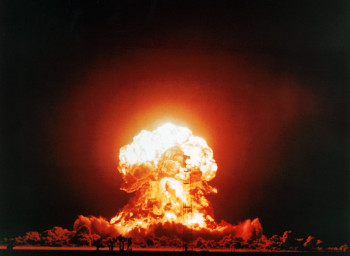
To Ukraine, the most attractive and most obvious goal is Melitopol, a city in Zaporizhzhia Oblast which is the key transportation point of the Russian-occupied south and also the gate to Crimea. Another potential target is Svatove, the liberation of which could undermine the Russian military presence in the north of Luhansk Oblast. And one more possibility is Volnovakha, another important railroad communication point between Donetsk and Mariupol.
The Ukrainian command’s choice between these three goals will probably open the year 2023, along with the war of logistics and the challenge of fighting in the winter environment. And then the spring campaign may be decisive for the war’s outcome.
In his recent interview with the Economist, Ukraine’s Chief Commander Valerii Zaluzhnyi suggested that Russia prepares some 200,000 fresh troops for a new large-scale offensive in January, February, or March 2023. From his point of view, this will undoubtedly include yet another massive attack on Kyiv from Belarusian territory.
Therefore, the commander said, the Ukrainian military needs extensive Western military assistance, including hundreds of tanks, vehicles, and artillery pieces, to successfully repel the new attack and regain all territories occupied by Russia after Feb. 24.
According to the Institute for the Study of War (ISW), a U.S.-based defense think tank, Russian President Vladimir Putin may be setting conditions for such an attack in the winter of 2023.
But, according to the group’s report published on Dec. 15, such an attack is “extraordinarily unlikely to succeed.”
The ongoing Russian efforts with brutal fighting near Bakhmut and Avdiivka and massive missile attacks fail to coerce Ukraine into negotiations or concessions. Still, the think tank believes the attack from Belarusian territory is “not imminent at this time.”
Moreover, when it comes to the direct involvement of the Belarusian military – which many have been speculating about recently – the possibility of that remains also “extraordinarily unlikely” in the foreseeable future,” the think tank believes.
“A Belarusian intervention in Ukraine, moreover,” the ISW said, “would not be able to do more than draw Ukrainian ground forces away from other parts of the theater temporarily given the extremely limited effective combat power at Minsk’s disposal.”
__________________________________________________________________________
Note from the author:
Hello! My name is Illia Ponomarenko, the guy who wrote this piece for you.
I hope you found it useful and interesting. I work day and night to bring you quality stories from Ukraine, where Russia is waging the biggest war in Europe since WWII. My little homeland, Donbas, is now the site of the worst fighting. We are helping to keep the world informed about Russian aggression. But I also need help from every one of you — to support Ukrainian wartime journalism by donating to the Kyiv Independent and becoming our patron. Together, we can help bring peace to Ukraine.
